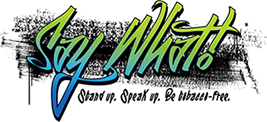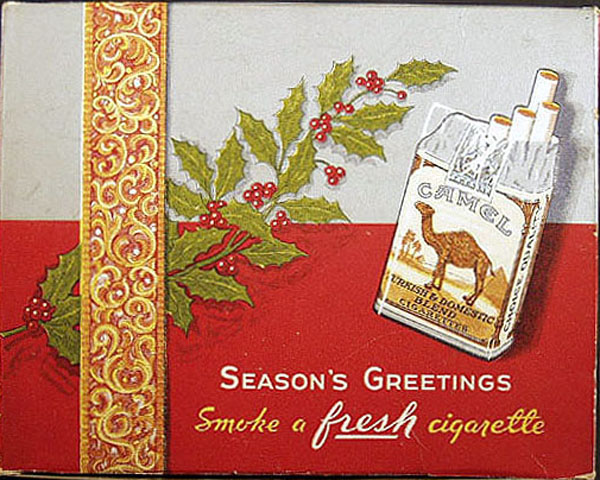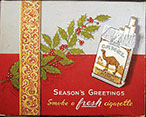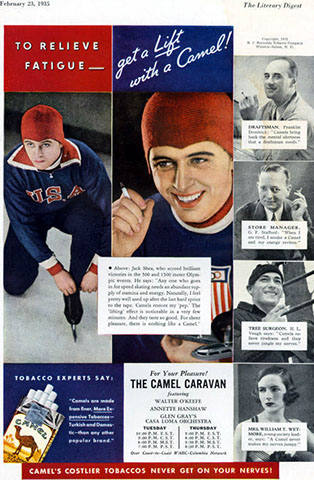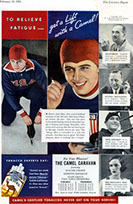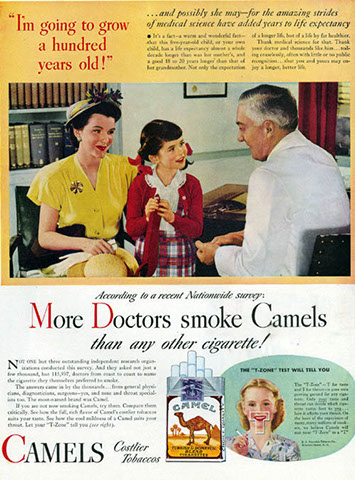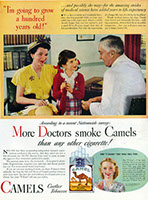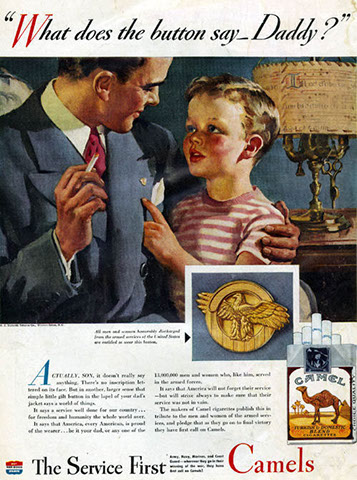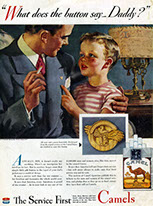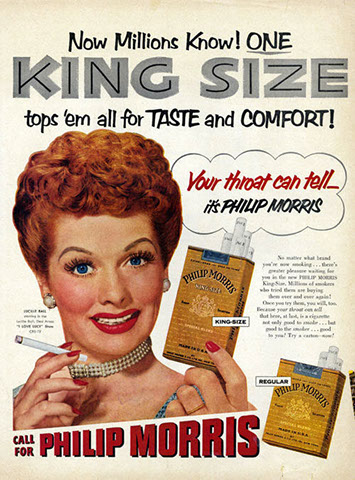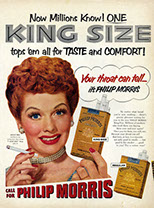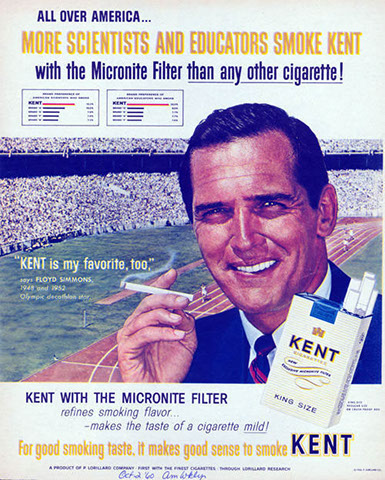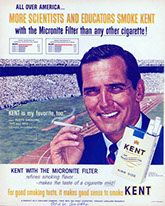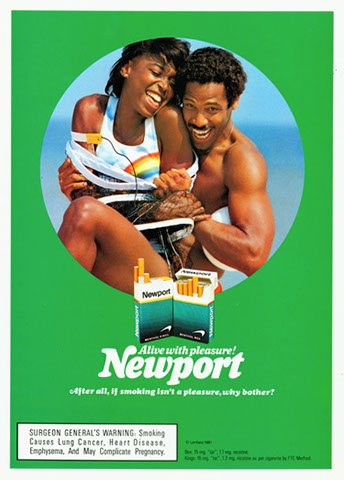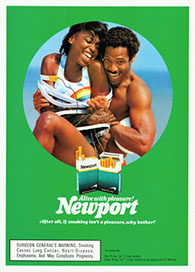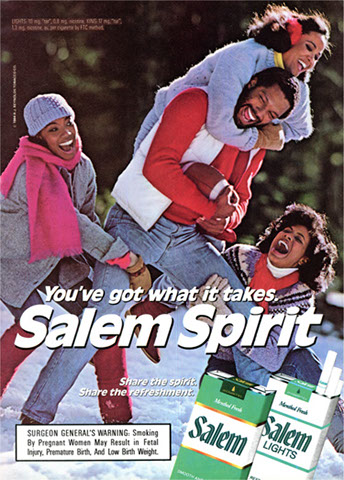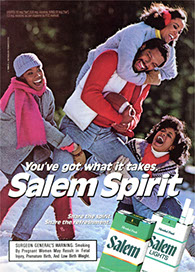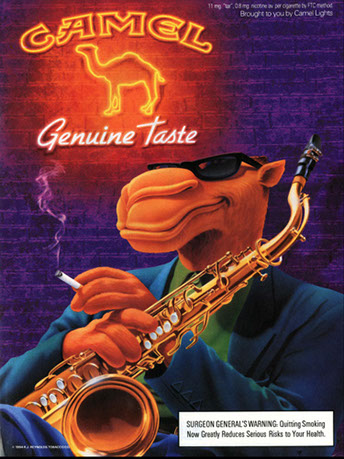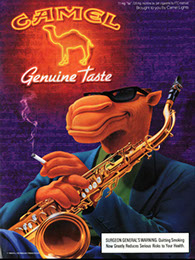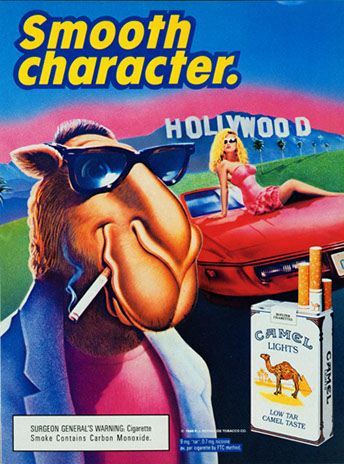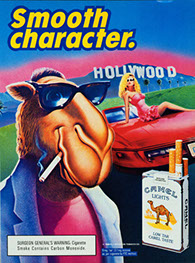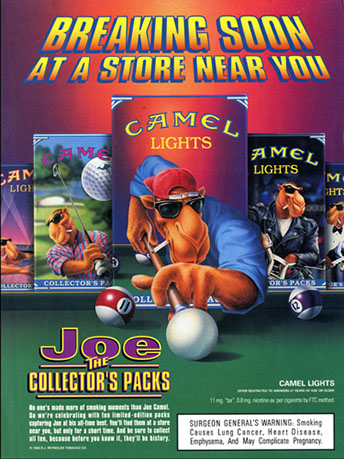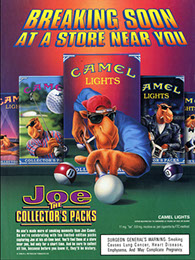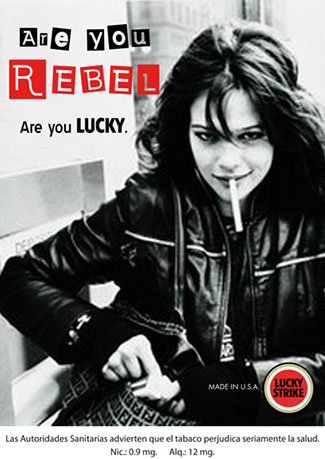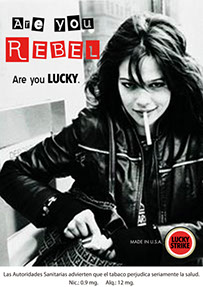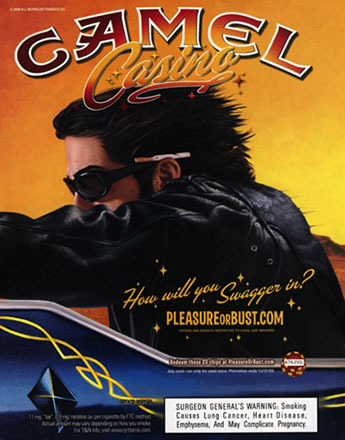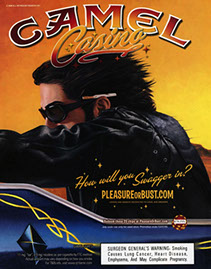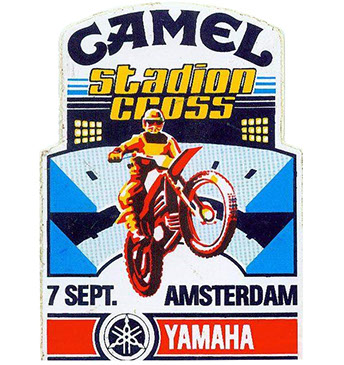
Module 2:
Dirty Tricks from the Tobacco Industry
The only thing more addicting than tobacco is tobacco money.
– Tobacco Industry Philanthropy
The information presented in Module 2 will discuss:
To begin, download and print the worksheet below to complete during Module 2.

Since the 1900’s, the tobacco industry has advertised their products through newspapers, magazines, the radio, television, and billboards. Marketing campaigns included clever slogans, imagery, themes, and narratives to persuade people their products were safe, healthy, and a normal part of daily life.
Take a look at the tobacco industry's marketing and advertising through the years.
Before the health risks of smoking were proven by medical research and realized by the American public, cigarette advertisements included testimonials from doctors.
Advertisements also included actors, athletes, military, and children. During this time, the industry used WWI and WWII as an opportunity to promote the use of their products as the “American life.”
In the 1960’s, several states and antismoking organizations highlighted tobacco industry tactics in their media campaigns and worked to prohibit the false claims the industry was using.
In 1967 the Action on Smoking and Health filed a complaint with the Federal Communications Commission that television and radio stations should provide free time for antismoking advertising whenever a paid cigarette advertisement was aired.
Antismoking messages received free airtime between 1967 and 1970, which lead to an immediate drop in cigarette consumption.
As a result, the tobacco industry recognized the need to stop antismoking ads and approached the U.S. Congress with a proposal to remove all cigarette advertising on television and radio. By doing so, antismoking advertisements stopped airing and ultimately lead to the increase in cigarette consumption again.
During the 1980’s and 1990’s, cigarette companies heavily targeted menthol cigarette advertising to the Black community through magazines and billboards, sponsoring entertainment, sporting events, and political and literacy campaigns.
In fact, billboard advertisements for tobacco products were placed in African American communities 4 to 5 times more often than White communities.
Advertising strategies also included cartoon characters as an attempt to gain youth consumers. The most notable cartoon character was known as Joe Camel from a R.J. Reynolds campaign.
Marketing tactics from the Joe Camel campaign included youth perceptions of independence, freedom and peer acceptance. Freebies and prizes including boxer briefs, t-shirts, sleeping bags, baseball caps, fishing lures, and card games were often provided at events and concerts.
During the early 2000’s, most tobacco advertising occurred on billboards and in magazines. They depicted rebellious, urban, or hip free-thinking young models who evoked a cool, laid back or proud personality. Some advertising campaigns highlighted taking risks, asserting their freedom and defying authority.
*Sources & images for this section include:
Growing up Tobacco Free: Preventing Nicotine in Children and Youths
Texas Tobacco Almanac
The Rise and Fall of Tobacco Control Media Campaigns, 1967-2006
Trinkets & Trash: Artifacts of the Tobacco Epidemic

The tobacco industry sponsored hundreds of events and donated to influential groups throughout the United States to promote their brands and tobacco products, and to protect their business.
Take a look at some of the events and programs tobacco companies sponsored or donated to during the 1990’s in Texas:
Philip Morris donated $25,000 to the El Paso AA Baseball team to display their new Marlboro sign at a new stadium.
Kraft General Foods, known for Kraft Mac n’ Cheese and owned by Philip Morris, sponsored Elementary School programs in Fort Bend ISD (Houston).
The U.S. Tobacco Company was a sponsor of the 47th San Antonio Rodeo.
Philip Morris benefited the National AIDS Fund by sponsoring the Virginia Slims Legends Tennis Tournament at the West Side Tennis Club in Houston.
X
Other Texas sporting events that were sponsored by tobacco companies included:
• Camel Motocross
• Redman Tractor Pulls
• Winston Drag Racing
• Copenhagen Racing Team
• Camel Monster Trucks
• Vantage Golf Tournament
Did you notice each sporting event included the name of a popular tobacco brand? Coincidence? We don’t think so!
*Sources for this section include: Texas Tobacco Almanac

Lob·by: seek to influence an issue
During the 1980’s and 1990’s, tobacco lobbyists spent millions of dollars influencing Texas legislation to protect their business.
Several tactics were used by the tobacco industry to guard their profits including:
• Preventing tobacco bills from being introduced to the House and Senate
floor. Bills were often “killed” during committee hearings.
• Preventing tobacco bills from going to health committees and sending them
to tobacco industry friendly committees.
• Criminalizing minors for buying tobacco while making sure vendors were
rarely held responsible.
• Underfunding enforcement efforts.
• Exempting tobacco products from product liability.
Here are a few legislative or lobbying tactics the industry used in Texas:
Philip Morris donated money to over 20 House of Representatives and 7 Senators.
Philip Morris made donations to 45 influential Texas groups as a lobbying strategy. Some of these groups included the Mexican American Chamber, Texas Women’s Alliance, Texas Black Caucus, Hispanic Women’s Leadership, North Texas Public Broadcasting, and Texas Christian University.
Philip Morris made $63,700 in contributions to state lawmakers, Supreme Court Justices, and some political groups.
The tobacco industry spent $27 million on lobbying efforts in Texas.
*Sources for this section include: Texas Tobacco Almanac
Training Module
Modules
Home
Say What! EST. 2011
Phone
512.245.8082
Mailing Address
Texas School Safety Center
ATTN: Say What Program
Texas State University
601 University Drive
San Marcos, TX 78666

Say What! was created and designed by young people from across Texas and connects students interested in eliminating tobacco from their schools and communities. The Say What! movement is funded by the Texas Department of State Health Services through a contract with the Texas School Safety Center at Texas State University.
